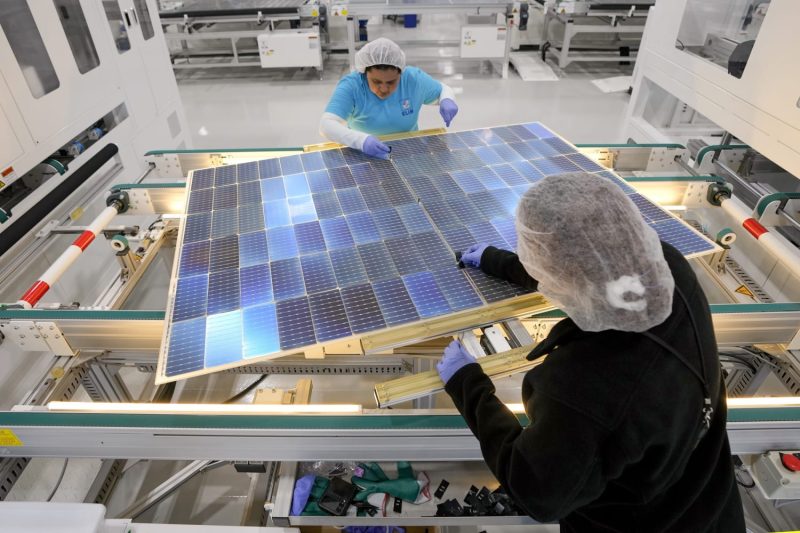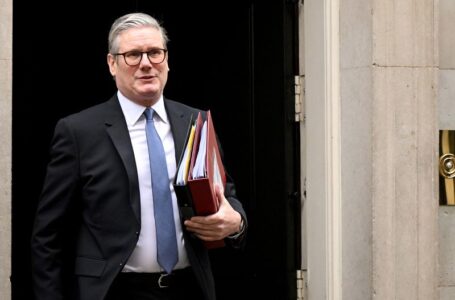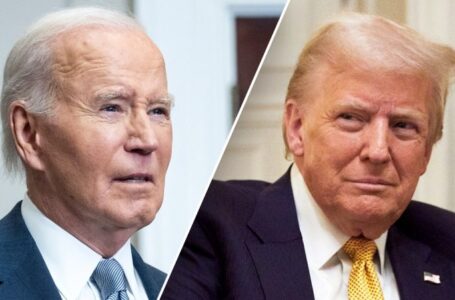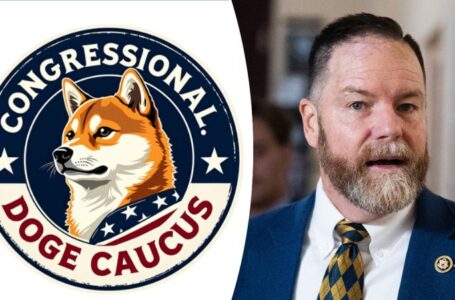UK leader arrives in Ukraine for security talks with Zelensky ahead of Trump’s inauguration
The U.S. labor market is shifting toward skilled labor as white-collar hiring slows


America’s job market increasingly appears to be splitting into two tracks, economists say, alongside a steady demand for skilled workers and a flagging interest in hiring more ‘knowledge-based’ professionals.
The evidence can be found in the data, which shows a higher unemployment rate for professional and business services workers, and a lower one for people who work in manufacturing.
‘It’s a buyer’s market for brain and a seller’s market for brawn,’ said Aaron Terrazas, chief economist at the jobs and workplace search site Glassdoor.
On Friday, the Bureau of Labor Statistics reported the latest monthly payroll data for the U.S. economy. Total employment rose by 175,000 in April. The unemployment rate rose slightly to 3.9% from 3.8% in March.
That came in below estimates of 240,000 jobs for April.
The softness in the jobs report was greeted with some positive reactions. Stock futures jumped after the news. Concerns about the U.S. economy have been focused on overheating — whether inflation will continue to rise and force the Federal Reserve to keep interest rates higher in an effort toslow the economy and bring rising prices under control.
Jason Furman, who served as President Barack Obama’s top economic advisor, said on CNBC’s ‘Squawk Box’ that it was a ‘goldilocks’ report, showing an economy that could be headed to the soft landing of reasonable inflation and low unemployment.
“The bottom line is this report is quite reassuring,’ said Furman, who now teaches at Harvard.
It’s not that America is only — or even mostly — producing low-wage jobs. The health care industry continues to lead the employment boom, with an approximately 4.5% gain in payrolls over the past year, equating to some 750,000 new jobs. Other industries seeing strong growth include government jobs, certain sectors of social work, travel, tourism and the arts — alongside some manufacturing sectors.
But the overall labor market remains at something of a standstill, as seen in a report earlier this week showing the hiring rate continuing to drift sideways. At the same time, the rate of workers quitting or being laid off is also not showing much change. Economists led by Guy Berger at The Burning Glass Institute research group call it the ‘great stay.’
‘It’s a good time to have a job, but a not-so-good time to be actively looking for one,’ he wrote in his Substack newsletter Wednesday.
Many American consumers have also begun reporting signs of a deteriorating job situation. In its latest report on consumer confidence, the Conference Board business group said respondents to its monthly survey reported feeling less positive about the current labor market and more concerned about future business conditions, job availability and income.
That echoed findings of the New York Federal Reserve’s monthly survey of consumer expectations, which reported more survey respondents feeling pessimistic about losing their job or finding a new job. Respondents rated the average probability of losing their job in the next 12 months at almost 1 in 6 — above pre-pandemic levels and the highest reading since September 2020.
‘On the margin, businesses are not as eager to add staff,’ said Sarah House, managing director and senior economist at Wells Fargo.
But why has payroll data remained strong? One reason is increased supply, thanks to rising participation rates in the workforce, as well as booming immigration.
‘There is increased labor ‘supply’ for businesses that do want to hire or add staff,’ House said.
Yet, those trends are likely to diminish too, if they haven’t already, she said.
One sign that the job market remains strong is that the number of individuals collecting unemployment is still very low.
‘We’re seeing a gradual and orderly slowing’ in workers quitting and firms with job openings, said Joe Brusuelas, principal and chief economist for RSM US LLP. That is consistent with private sector firms ‘carefully managing their labor force.’
On Wednesday, Federal Reserve Chair Jerome Powell said the central bank does not intend to change its key interest rate anytime soon even as its fight against accelerating price increases has stalled — and despite the apparent softening of the labor market.
He said the central bank had ‘the luxury of strong growth and a strong labor market’ that will allow it to maintain interest rates until inflation comes down further — and ruled out any implication that there might be ‘stagflation’ in the economy.
But he invoked the prospect of a rate cut should the labor market ‘unexpectedly’ weaken.
As inflation continues to moderate, Powell said, ‘We’re now focusing on the other goal,’ referring to the Fed’s dual mandate of balancing price growth with jobs.
‘The employment goal now comes back into focus. So we are focusing on it,” he said.
Some economists saw Friday’s jobs report as sign that Powell’s plans are coming to fruition.
‘These are the #jobs numbers that Jay Powell was hoping for,’ David Wessel, director of the Hutchins Center on Fiscal and Monetary Policy at the Brookings Institution, posted on X.











